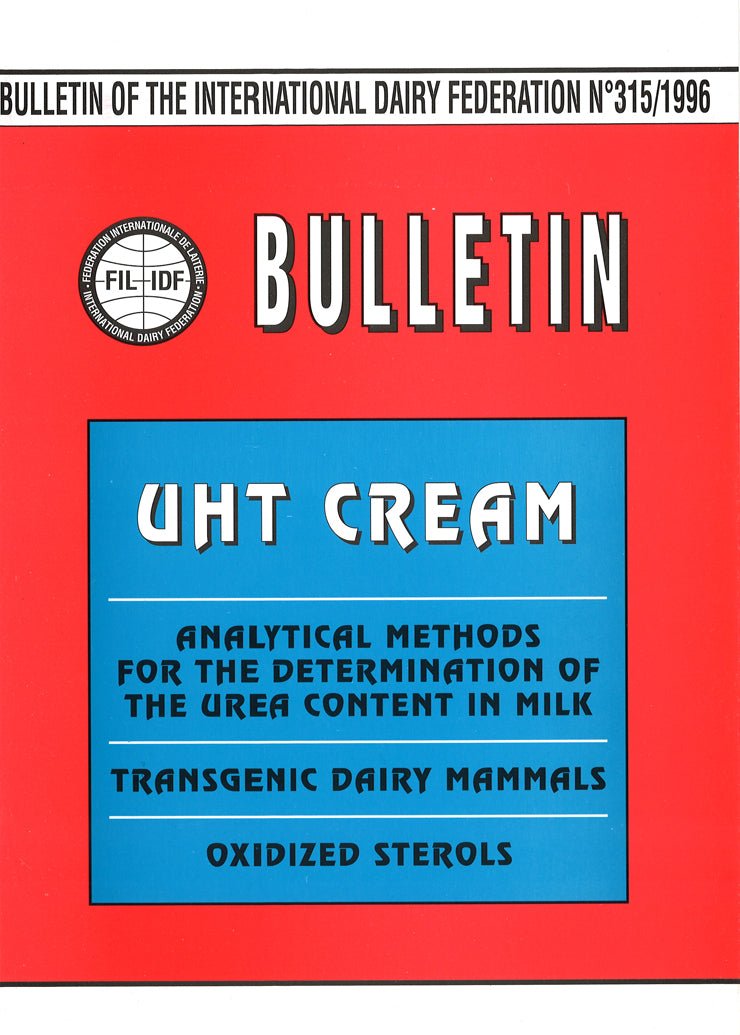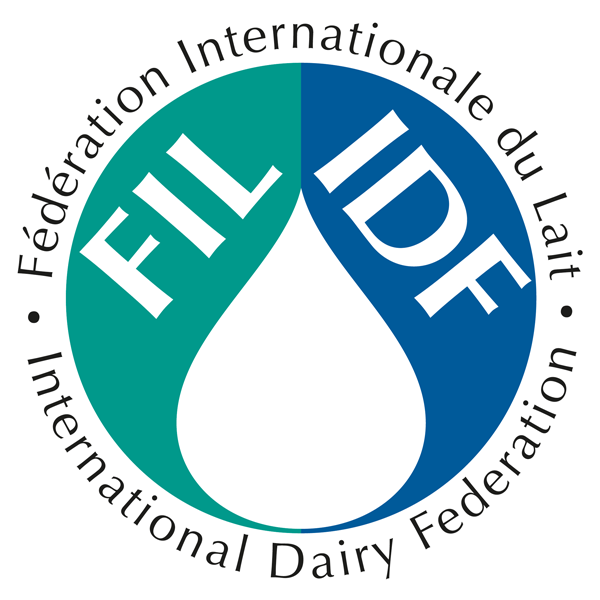Bulletin of the IDF N° 315/1996 - UHT cream - Analytical Methods for the Determination of the Urea Content in Milk - Transgenic Dairy Mammals - Oxidized Sterols - Scanned copy
Couldn't load pickup availability
Document info
| pages | 58 |
|---|---|
| published date | 24 March 1996 |
| reference | Bulletin of the IDF No. 315/1996 |
Publication description
UHT cream
by various authors – Group of Experts B21 – Influence of technology on the quality of heated milk and fluid milk products (For Pasteurization of cream see Bulletin of IDF No. 271/1992)
This monograph on UHT cream is introduced by a review of the information received from 15 National Committees on “Questionnaire 2193/B”. Regulatory aspects, UHT-cream market, quality, additives, and packaging are covered. The importance of raw milk quality in the manufacture of good UHT cream is looked at and the factors that may affect it investigated. The main steps involved in the production of UHT cream – separation and preheating, standardization, and UHT-heating including homogenization – are examined.
Specific requirements for packaging of UHT cream, due to its high fat content, are discussed. Finally, suitable quality indices for UHT creams of different fat contents are considered, and the factors affecting cream quality are outlined. Because UHT dairy creams tend to have limits on their functionality and moderate stability during storage, modified creams are also considered.
32 pp
Analytical Methods for the Determination of the Urea Content in Milk
by D. Lefier (France)
The unbalanced feeding of cows leads to a high urea content in milk, which in turn can affect milk production and fertility, leading to reduced profit margins for milk producers. A dependable and efficient method for the determination of the urea content in milk has yet to be adopted.
This paper presents a comprehensive description of the methods currently in use for the determination of the urea content in milk, classified according to their principle:
- direct methods, based on the measurement of a complex formed between urea and a reagent – essentially colorimetric methods;
- indirect methods, based on the measurement of a byproduct from urea degradation, which reacts with a reagent – mainly enzymatic methods;
- physical methods, which include infra-red measurement and combinations of enzymatic methods with the use of ammonium ion-selective electrodes.
Both manual and (semi-)automated procedures for each of these methods are listed and compared according to recovery of added urea, linearity range, reproducibility and repeatability.
For manual enzymatic determinations of urea contents, a preliminary protein precipitation is required, which is done according to several different procedures.
The effect of the use of preservatives and of sample storage on the urea content in milk as discussed in different papers is also summarized, as is the influence of the original ammonia, uric acid and uracil contents.
4 pp
Transgenic Dairy Mammals
by O.H. Postma (the Netherlands), G. Stranzinger (Switzerland), R. Strijker (the Netherlands) & D.F. Went (Switzerland)
This Report examines potential applications of transgenic dairy mammals – especially dairy cattle – in the dairy industry. After a brief description of the technical state of the art, the Report identifies the potential use of transgenic cattle technology for product differentiation and improvement of cost price efficiency. The Report, however, also recognizes the importance of public acceptance of dairy products from transgenic cattle, and identifies the major issues in this field. In this vein, the Report also contains suggestions to deal with risk evaluation and social implications of this technology. The findings of the authors are summarized in the form of conclusions and recommendations. A glossary of technical terms as applied to transgenic organisms is provided.
13 pp
Oxidized Sterols
by L.-Å. Appelqvist (Sweden)
The structures and names of those cholesterol oxides most commonly found in food are presented, together with a summary of the biomedical research from which concern for cholesterol oxides as a potential health hazard emanates.
Literature data on the qualitative and quantitative composition of cholesterol oxides in fresh and moderately heated milk, in milk powders, in butter and ghee, as well as in different types of cheese, are presented.
Results from a recent round robin, in which 17 different sets of data from the analysis of whole milk powders and skimmilk powders carried out in American, Asian and European laboratories are presented and discussed. It is demonstrated that it is still premature to establish “true” values for levels of cholesterol oxides in a certain food sample, but in this report an attempt is made to exclude some literature data as being rather unlikely, since methods were used which in the round robin gave results much higher than those from some very advanced laboratories.
7 pp


